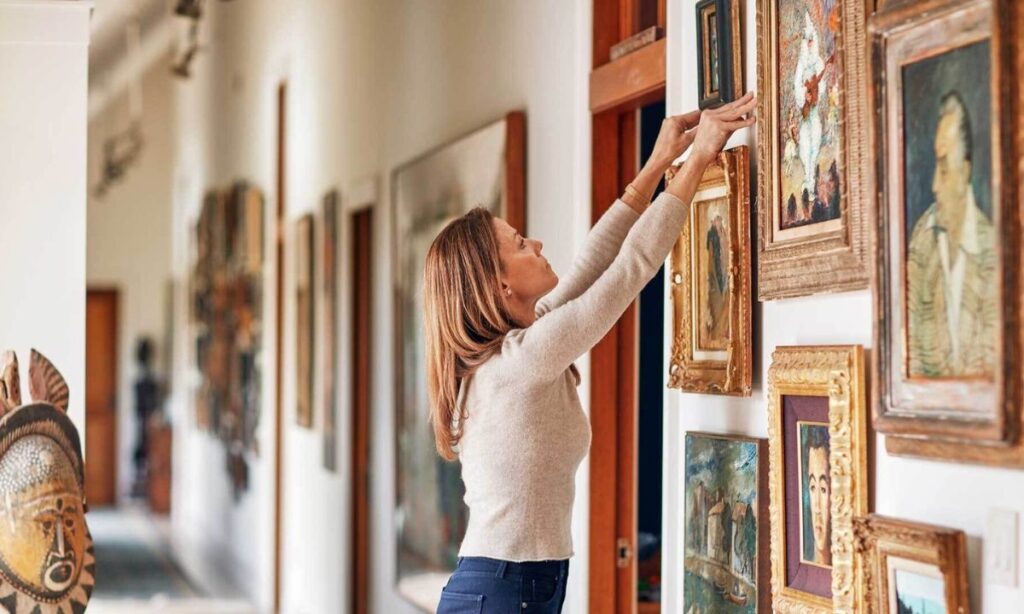Insurance For High-Value Art Collections: High-value art collections represent not only a significant financial investment but also a testament to passion, culture, and heritage. Protecting these masterpieces against unforeseen risks is paramount for collectors and institutions alike. Insurance for high-value art collections offers a safety net against perils such as theft, damage, and natural disasters, ensuring peace of mind for owners and custodians. In this article, we delve into the intricacies of insuring high-value art collections, exploring coverage options, risk assessment, and best practices for safeguarding these valuable assets.
Understanding the Importance of Insurance For High-Value Art Collections
High-value art collections have lots of different kinds of art, like paintings, sculptures, old things, and historical stuff. These collections are really valuable, both in money and because they mean a lot to people. But they’re also at risk from lots of things, like people stealing them, fires, floods, or even getting damaged when they’re moved around or put on display. Insurance is like a safety net for these collections.
It helps protect them financially and gives peace of mind to the people who own them, the galleries and museums that display them, and even the big institutions. So if something bad happens, like a theft or a disaster, insurance steps in to help cover the costs. This way, we can keep these important pieces of culture safe for the future.
Assessing the Value and Risks of Art Collections
Before people get insurance for their expensive art, they have to figure out a few things. First, they need to know how much their art collection is worth. This means checking out where each piece of art comes from, how rare it is, what condition it’s in, and how much someone might pay for it if they wanted to buy it. All of these things help decide how much insurance they need and what kind of insurance will be best for them.

For example, if someone has a really rare painting that’s worth a lot of money, they’ll probably need more insurance for it than they would for a more common piece of art. And if a piece of art is in bad shape, it might need special insurance to cover any damage that could happen to it.
But it’s not just about how much the art is worth. People also need to think about where they keep their art and what they do with it. If they have a fancy art gallery in their house where they show off their collection to guests, they might need insurance that covers any accidents that could happen while people are looking at the art. Or if they lend their art to a museum for a special exhibition, they’ll need insurance that protects the art while it’s being moved and displayed.
Types of Insurance Coverage for High-Value Art Collections
Insurance coverage for high-value art collections typically falls into two categories: scheduled coverage and blanket coverage. Scheduled coverage involves insuring individual artworks or groups of artworks listed and appraised separately, providing specific coverage limits for each item. Blanket coverage, on the other hand, provides aggregate coverage for the entire collection, offering flexibility and simplicity in managing insurance needs. Collectors can choose the type of coverage that best aligns with their collection size, value, and risk profile.
Specialized Art Insurance Policies
Many insurance companies offer specialized art insurance policies tailored to the unique needs of collectors, galleries, and museums. These policies provide comprehensive coverage for a wide range of risks, including accidental damage, theft, mysterious disappearance, and restoration costs. Art insurance policies often include additional benefits such as coverage for transit, loaned artworks, and exhibition-related liabilities, providing peace of mind to owners and custodians.
Factors Influencing Art Insurance Premiums
Several factors influence the cost of insurance premiums for high-value art collections, including the collection’s total value, risk profile, security measures, and location. Artworks with higher values or greater exposure to risks may attract higher premiums, while collections stored in secure, climate-controlled facilities may qualify for lower rates. Owners can mitigate insurance costs by implementing robust security measures, maintaining proper documentation, and demonstrating proactive risk management practices.
Risk Management Strategies for Art Collectors and Institutions
Art collectors and institutions can reduce their exposure to risks and insurance premiums by implementing effective risk management strategies. This includes investing in state-of-the-art security systems, such as alarms, surveillance cameras, and environmental controls, to protect against theft, vandalism, and environmental damage. Additionally, collectors should implement comprehensive inventory management systems, maintain detailed documentation, and conduct regular appraisals to ensure accurate insurance coverage and claims settlement.
Working with Experienced Insurance Brokers and Appraisers
Securing adequate insurance coverage for high-value art collections requires specialized expertise and industry knowledge. Art collectors and institutions can benefit from partnering with experienced insurance brokers and appraisers who understand the unique complexities of insuring artworks. These professionals can assess the collection’s value, recommend suitable coverage options, negotiate favorable terms with insurers, and provide ongoing support in managing insurance needs and claims.
Reviewing and Updating Coverage Regularly
Art collections are like living things—they grow, change, and move around. Imagine you have a collection of paintings, sculptures, and other artworks. Some you bought, some you sold, and maybe some are on display in museums or galleries. All these pieces together make up your collection.
Now, think about what would happen if something bad occurred, like a fire or theft. You’d want to make sure your collection is protected, right? That’s where insurance comes in. It’s like a safety net that helps you if something goes wrong.
But here’s the thing: your collection isn’t stagnant. It’s always changing. You might buy a new painting or sculpture. You might decide to sell something to make room for new pieces. Or maybe a museum wants to borrow one of your artworks for an exhibition.
Because your collection is always evolving, your insurance needs to keep up. That’s why it’s crucial to review and update your insurance regularly. This means checking to make sure the coverage matches the current value of your collection and any new risks that might come up.
Let’s break it down a bit more:
- Keeping Up with Value: As your collection grows or changes, its value can increase. That means if something happens, you want to make sure your insurance covers the full value of your collection. Regularly updating your insurance helps ensure you’re not underinsured.
- Adapting to Changes: Maybe you bought a rare painting that’s now worth a lot more than when you first got it. Or perhaps you sold a sculpture that was a big part of your collection. Updating your insurance lets you adjust your coverage limits based on these changes.
- New Additions: When you acquire new artworks, you want them to be protected too. Adding them to your insurance policy ensures they’re covered in case of any mishaps.
- Accounting for Risks: Different risks can arise over time. Maybe there’s been an increase in thefts in your area, or there’s a higher risk of damage due to climate change. Reviewing your insurance helps you make sure you’re protected against these evolving risks.
Think of your insurance policy as a tool to safeguard your passion and investment in art. By staying on top of it, you can enjoy your collection with peace of mind, knowing it’s protected no matter what changes come its way.
Conclusion
Insurance for high-value art collections plays a vital role in protecting cultural heritage, preserving artistic legacies, and safeguarding financial investments for collectors and institutions worldwide. By understanding the importance of insurance, assessing the value and risks of art collections, exploring coverage options, implementing risk management strategies, and working with experienced professionals, owners can ensure comprehensive protection against unforeseen perils and enjoy peace of mind knowing their treasures are safeguarded for future generations.


